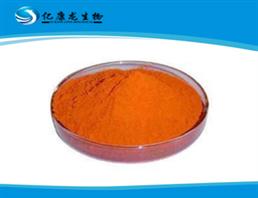
Curcumin
| Price | $1 |
| Package | 1KG |
| Min. Order: | 1KG |
| Supply Ability: | 6t |
| Update Time: | 2018-10-17 |
Product Details
| Product Name: Curcumin | CAS No.: 458-37-7 |
| Min. Order: 1KG | Purity: 99%(Customizable specifications) |
| Supply Ability: 6t | Release date: 2018/10/17 |
Curcumin is a chemical component extracted from the rhizome of some plants in the family Zingiberaceae and Araceae. Among them, turmeric contains about 3% to 6%, which is a diketone pigment which is rare in the plant kingdom and is a diketone. Compound. Curcumin is an orange-yellow crystalline powder with a slightly bitter taste and insoluble in water. It is mainly used for coloring products such as sausage products, canned foods, and sauces in food production. Medical research shows that curcumin has the effects of lowering blood fat, anti-tumor, anti-inflammatory, choleretic and anti-oxidation. Scientists have discovered that curcumin can help treat drug-resistant tuberculosis
The main sources of curcumin are Curcuma aromatica Salisb. roots, turmeric (C. longa L.) rhizomes, C. zedoaria (Berg. Rosc.) rhizomes and Araceae (Acorus calamus) L.) Rhizome and so on. [3]
Curcumin is an orange-yellow crystalline powder with a slightly bitter taste, insoluble in water and ether, soluble in ethanol and propylene glycol, soluble in glacial acetic acid and alkali solution, reddish brown when alkaline, and yellow when neutral and acidic. Determined according to the OT-42 method. The melting range is 179 to 182 °C.
Curcumin has strong stability to reducing agent and strong coloring property. It is not easy to fade after coloring, but it is sensitive to light, heat and iron ions, and has poor light resistance, heat resistance and iron ion resistance.
Since the curcumin molecule has two hydroxyl groups at both ends, the conjugation effect of electron cloud deviation occurs under alkaline conditions, so when the pH is greater than 8, the curcumin will turn from yellow to red. Modern chemistry uses this property as an acid-base indicator.
application
Food additive
Curcumin has been widely used in the food industry as a commonly used natural pigment for a long time, and is mainly used for dyeing canned foods, sausage products, and sauces, and its use amount is determined according to normal production needs. The product form of the functional food containing curcumin as a main component may be a general food or a non-food form such as a capsule, a pill or a tablet. For general food forms, some yellow foods such as pastries, sweets, and drinks can be considered.
Curcumin is a food additive approved by the FAO Codex Alimentarius Commission (FAO/WHO-1995) and was one of the first nine natural pigments approved in the Food Hygiene Standard for Food Additives in China. The newly promulgated "Standards for the Use of Food Additives" (GB2760-2011) provides for frozen drinks, cocoa products, chocolate and chocolate products, as well as confectionery, gum-based confectionery, decorative confectionery, toppings and sweet juices, batter, flour and fried flour. The maximum use amount of curcumin in instant rice noodles, flavored syrup, compound seasoning, carbonated drinks and jelly is 0.15, 0.01, 0.7, 0.5, 0.3, 0.5, 0.5, 0.1, 0.01, 0.01 g/kg, margarine, respectively. And similar products, cooked nuts and seeds, food product stuffings and puffed foods can be used in moderation according to production needs.
Curcumin also has an antiseptic effect. Currently, curcumin is widely used in the food industry as a seasoning and pigment at home and abroad. In medieval Europe, turmeric can replace precious saffron, a traditional curry food that is indispensable in Indian life, a common roulade in the Middle East, a common condiment of Persian and Thai dishes, and a commonly used pigment in mustard sauce. The curcumin used for food coloring is mainly divided into four categories: water-dispersible turmeric oil, water-dispersible turmeric, oil-soluble purified curcumin and purified turmeric powder. China began to study and apply curcumin in the mid-to-late 1980s, and reached its peak in the early 1990s. However, due to product quality, the degree of marketization is not high. At present, it has developed water-soluble and oil-soluble curcumin products comparable to those in foreign countries. It has been produced into a variety of colors of curcumin, which has been widely used in pasta, beverages, fruit wine, candy, cakes, cans, juices and Cooking dishes, used as compound seasonings in chicken essence compound seasonings, puffed seasonings, instant noodles and noodle products, convenience food seasonings, hot pot sauces, cream flavors, seasonings, beef jerky products, etc. China is one of the main producing areas of turmeric in the world. It is rich in resources. At present, the annual output has reached tens of thousands of tons, which has a good market advantage. [4]
Chemical indicator
Used as an acid-base indicator, pH 7.8 (yellow) - 9.2 (red brown).
medicine
Turmeric is a commonly used drug, and its main biologically active ingredients are curcumin and volatile oil. The former has the effects of lowering blood fat, anticoagulation, anti-oxidation, choleretic, anti-cancer, etc.; while the latter mainly plays an anti-inflammatory, anti-bacterial and anti-cough effect. Curcumin exerts its anticancer effect by inducing differentiation of malignant tumor cells, inducing apoptosis of tumor cells and inhibiting tumor growth in various stages, and is widely used clinically.
1, anti-cancer
Curcumin is a plant polyphenol extracted from turmeric, and it is also the most important active ingredient of turmeric. Recent studies have not only proved the traditional role of turmeric, but also revealed some new pharmacological effects, such as anti-inflammatory, anti-oxidation, scavenging oxygen free radicals, anti-human immunodeficiency virus, protecting liver and kidney, anti-fibrosis and anti-cancer. Anti-cancer effects may be related to the inhibition of the activation and expression of transcription factors such as nuclear factor-κB and activator-1, and have no obvious side effects.
2, dementia
Animal experiments at Duke University in the United States have shown that curcumin in curry not only decomposes amyloid in the brain of mice, but also prevents the production of this protein. Researchers have pointed out that eating curry may also have a similar effect on people, which helps prevent Alzheimer's disease.
Many studies have shown that large accumulation of amyloid in the brain is one of the most important causes of senile dementia. Previous studies have shown that curcumin, a key ingredient in curry, has the effect of preventing damage to brain nerve cells and improving brain nerve cell function.
According to US media reports, researchers at Duke University in the United States genetically engineered mice to produce many amyloid proteins in their brains. The researchers then provided curcumin-rich foods to the rats, and found that the amyloid in the brain of the rats was broken down, and the same recipe prevented the mice from developing amyloid in the adult brain.
3, anti-inflammatory
Inflammation is a complex process that is triggered by cellular infections and/or tissue damage, and a series of chain reactions that ultimately lead to the rapid development of certain chronic diseases. Since inflammation plays an important role in most chronic diseases, anti-inflammatory drugs are needed to prevent it. Although a number of different steroidal and non-steroidal anti-inflammatory drugs such as semecoxib, aspirin, ibuprofen, phenylbutazone, etc. can be used to treat inflammatory diseases, most of them have side effects. Studies have found that the anti-inflammatory activity of curcumin is comparable to steroidal and non-steroidal drugs such as indomethacin and phenylbutazone, and is safe in most cases.
Company Profile Introduction
You may like
Recommended supplier
| Product name | Price | Suppliers | Update time | |
|---|---|---|---|---|
| $50.00/100mg |
VIP5Y
|
TargetMol Chemicals Inc.
|
2024-11-19 | |
| $1.00/25KG |
VIP6Y
|
Hebei Weibang Biotechnology Co., Ltd
|
2024-10-25 | |
| $25.00/1kg |
VIP1Y
|
Aurora Industry Co., Ltd.
|
2024-09-06 | |
| $0.00/1g |
VIP1Y
|
BEIJING SJAR TECHNOLOGY DEVELOPMENT CO., LTD.
|
2024-09-05 | |
| $9.00/1KG |
VIP4Y
|
Hebei Chuanghai Biotechnology Co,.LTD
|
2024-08-21 | |
| $5.30/1kg |
VIP1Y
|
Shandong Deshang Chemical Co., Ltd.
|
2024-06-25 | |
| $0.00/1kg |
VIP2Y
|
Hebei Kingfiner Technology Development Co.Ltd
|
2024-06-11 | |
| $0.00/1kg |
VIP2Y
|
Chongqing Zhihe Biopharmaceutical Co., Ltd.
|
2024-05-21 | |
| $18.00/10kg |
VIP1Y
|
Hebei Shengyang Water Conservancy Engineering Co., Ltd.
|
2024-05-10 | |
| $10.00/1KG |
VIP2Y
|
Henan Fengda Chemical Co., Ltd
|
2024-04-26 |
- Since: 2018-02-07
- Address: No. 99, Gangwu Avenue, International Port Area, Xi'an, Shaanxi Province







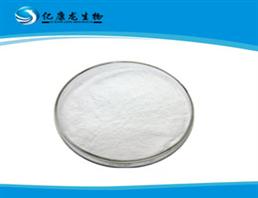
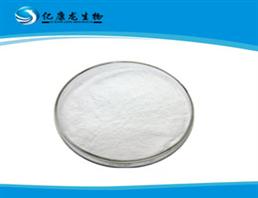
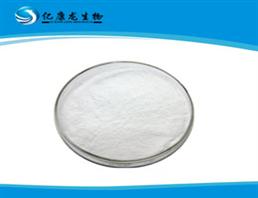
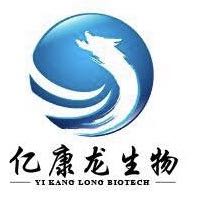
 China
China